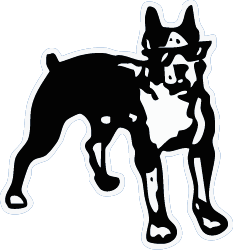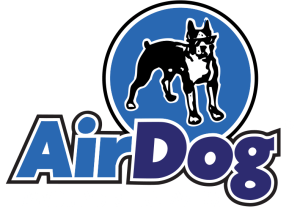
Utilizing a 2020 Volvo VNL with D13TC engine, which is regularly operated by Joel Morrow of Ploger Transportation, Norwalk, OH, we went to the Ohio State University Center for Automotive Research, an independent testing facility, to evaluate the performance of our products in areas of 1) emissions, and 2) fuel economy. As you will read in the Test Report, these lab tests utilized one test cycle, the same test vehicle, the same tank of fuel, and the same test driver (provided by the lab), for the duration. The truck was “loaded” to a simulated GCVW of 35,000 lbs., representing a partial cargo load, and a 3500-lb. block was placed above the drive axle to aid in reducing the potential for wheel slip on the dyno.
“The Ohio State University Center for Automotive Research observed a measurable increase in vehicle fuel economy during testing of the customer’s AirDog Heavy Duty Diesel Fuel System over the UDDS test cycle.” [CAR-ES Report Final, Pg. 6]
Performing the requisite warmups before collecting data, coast-down tests, etc., the truck was run through 32 test cycles. The test cycle used throughout was the EPA Heavy-Duty Urban Dynamometer Driving Schedule (UDDS), which was developed for chassis dyno testing of heavy-duty vehicles. The test truck features a down-sped powertrain, designed to maximize on-highway fuel economy. Arguably, the test truck was less-than-ideally equipped for the UDDS, which includes a wide range of urban driving styles: multiple stops, hard accelerations, highway cruising, braking, etc., over the course of the 5.55-mile, 1060-second, test cycle. The driver was required to stay within +/- 2.5 MPH of the test cycle, and if deviations were witnessed, the results were omitted. We specifically selected the UDDS cycle, because we wanted to make this testing as difficult on our system as possible.
The test plan included a range of Baseline tests, in which the truck was returned to original/stock condition – the AirDog and Champ II systems were removed, and the factory-installed DAVCO Fuel Pro Fuel/Water Separator was re-installed. Tests were planned in multiples of 5 runs: 5 Baseline runs, 5 runs with the Champ II only (Condition A), 5 runs back to Baseline condition, 5 runs with the AirDog only (Condition B), 5 runs (3 actually performed, see following comments) back to Baseline condition, and finally, 5 runs with the AirDog + Champ II installed together (Condition C). The purpose of the multiple runs is simply to ensure consistency in the truck performance.
Condition A (Champ II alone) resulted in measurable emission reductions and fuel economy improvement compared to Baseline.
Condition B (AirDog alone) resulted in an improvement in fuel economy, but showed a small increase in NOx compared to Baseline. When test lab staff were asked about the Condition B NOx readings, it was noted:
NOx was running higher on the truck, overall, on Test Day 2 compared to Day 1, including in Baseline form. At all points during testing, Condition B emissions levels were less than the peak levels noted in Baseline form. The reasons for the truck running higher in NOx on Test Day 2 are unknown, and include many possibilities, particularly due to variances in Turbo Compounding performance.
The test lab omitted Baseline run #6 from Test Day 2 results after a quality review, leaving only 2 Baseline runs in comparison for the latter part of the day. It was discussed that there was a reasonable suspicion that the reduced Baseline runs on Test Day 2 did not allow the truck the time to develop the variances and peaks in pollutants output that were witnessed during the higher-multiple runs.
For this reason, the lab also provided results calculations comparing Condition B and Condition C to Baselines 1-5 from Test Day 2. These results show a substantial reduction in emissions, and improvement in fuel economy.
Worth noting:
The truck was placed in Performance Mode for this dyno testing. “P” Mode provides a quicker shift pattern (compared to a more typical on-highway Economy Mode), disables the ABS system, etc.
The truck was in a high state of tune.
With only the AirDog installed, prior to dyno testing, higher rail pressures have been confirmed on several Volvo D11/D13/D13TC and Mack MP7/MP8HE engine installations.
Prior to dyno testing, cylinder balance tests were performed. On engines which had overheads performed by skilled, well-known, technicians, the cylinder balance test results were exceptional. With the addition of the AirDog, the cylinder balance test results were further improved, coming in as close to perfect as has been witnessed.
Condition C (AirDog + Champ II combined) resulted in measurable emission reductions and fuel economy improvement compared to Baseline.


Heavy-duty diesel fuel systems from AirDog will help increase your mileage and injector life by removing water, vapor and contaminants. Made in the USA since 1990.
PUREFLOW™ TECHNOLOGIES, INC.
5508 Business 50 West
Jefferson City, MO 65109
© 2025. All rights reserved.
Site by Zimmer Communications